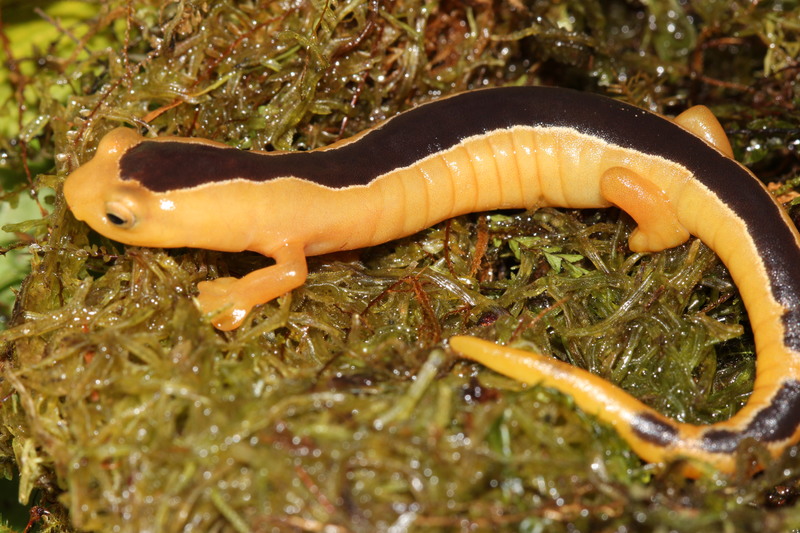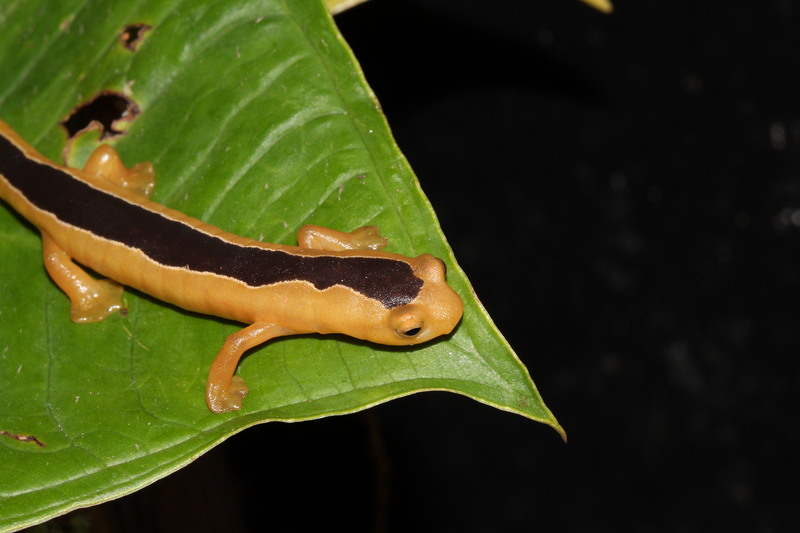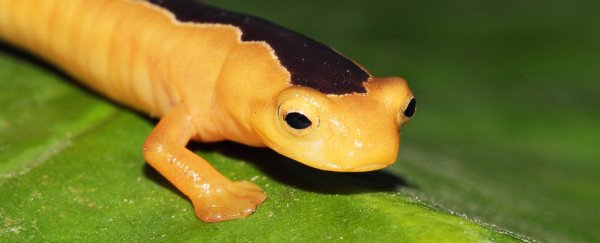A species of salamander that hasn't been seen since 1975 has been rediscovered alive and kicking in Guatemala.
The biologists who have spent years searching for it are understandably delighted, and it's also potentially good news for the ecology of the region.
The juvenile Jackson's climbing salamander (Bolitoglossa jacksoni), also known as the "golden wonder" for its glorious colouring, was spotted by Finca San Isidro Amphibian Reserve guard Ramos León while on patrol at the edge of the reserve.
He took a photo and sent it to Carlos Vasquez, curator of herpetology at USAC University in Guatemala, who confirmed the species. It's only the third individual ever seen.
The first two were discovered in 1975 by two students, Paul Elias and Jeremy Jackson. It was hiding under bark in the cloud forest of the Sierra de los Cuchumatanes in western Guatemala.
 (Carlos Vasquez Almazan)
(Carlos Vasquez Almazan)
Since then, the salamander had not been seen again, in spite of Vasquez's best efforts - he has spent over 3,000 hours and 30 trips since 2005 into the forest in search of it.
Earlier this year, he showed the guards of the Finca San Isidro Amphibian Reserve what to look for and where to look.
"I explained to them how important this species is and I left a poster there so they could see a picture of the Jackson's climbing salamander every single day," Vasquez said.
The salamander was part of the Search for Lost Species' 25 Most Wanted list, of which it is now the first recovered.
"We had started to fear that the species was gone, and now it's like it has come back from extinction. It's a beautiful story, and marks a promised future for the conservation of this special region," said Vasquez.
 (Carlos Vasquez Almazan)
(Carlos Vasquez Almazan)
The discovery is also wonderful closure for Jackson and Elias - in more than one way. On an earlier trip in 1974, Elias had discovered two other salamanders that also subsequently didn't reappear for decades.
The Finca Chiblanc salamander, Bradytriton silus, was rediscovered by Vasquez in 2009, 32 years later, and the long-limbed salamander, Nyctanolis pernix, was rediscovered by Vasquez in 2010. Both were important "missing links" in the Neotropical plethodontid group of lungless salamanders.
"The night I got the news from Carlos that Bolitoglossa jacksoni had been rediscovered, I flew off the couch where I'd been falling asleep, let loose a string of expletives (in a good way), and did a little happy dance," Jackson said.
"When 40 years later as an act of faith, a tract of land next to where we discovered [B. jacksoni] was protected, we all held our breath hoping that this exceptional phantom would reappear," Elias added.
"The rediscovery of this rarest of the rare shows how important habitat preservation is to the persistence of these special animals in these exceptional places, and for me personally it is a moment of sheer joy."
